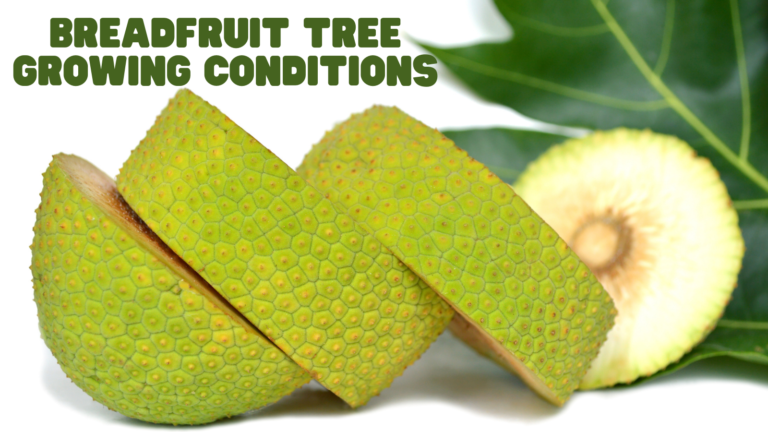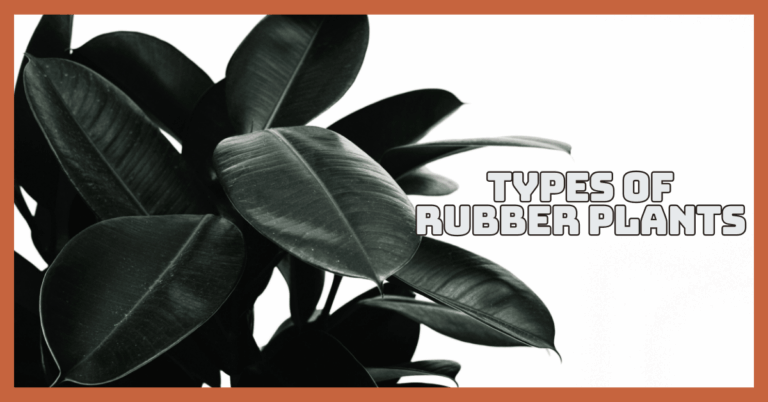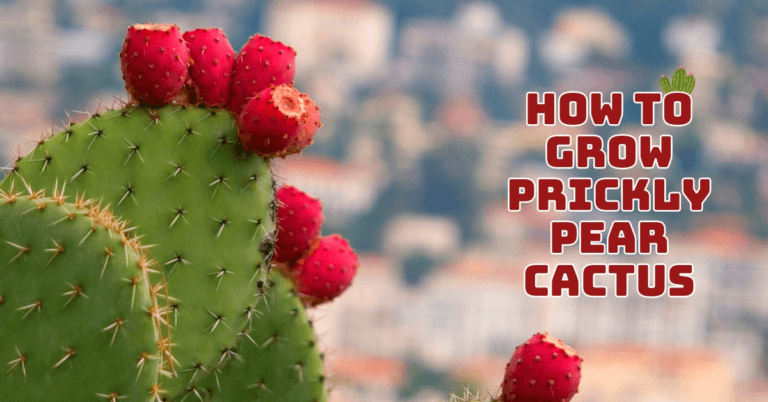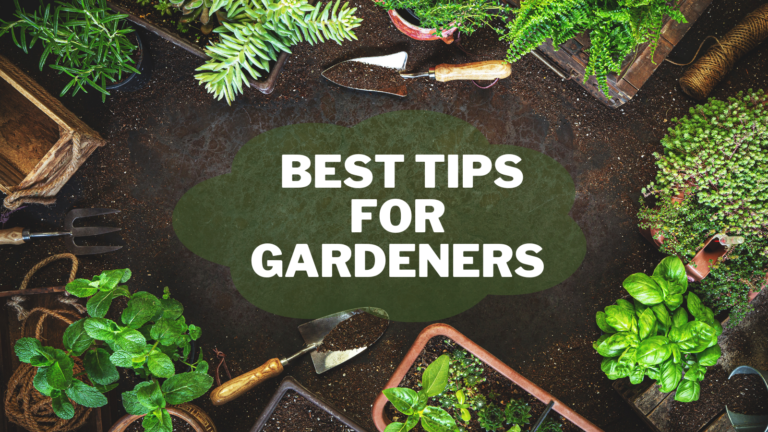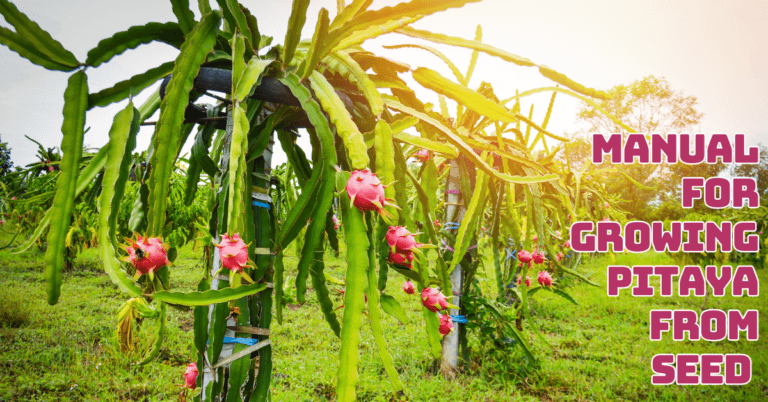Expert Tips On How To Plant Cumin Successfully
Expert Tips On How To Plant Cumin Successfully
Growing cumin at home can be incredibly rewarding!
In this guide on How to Plant Cumin, we’ll cover everything you need for a successful harvest, from soil preparation to proper watering techniques.
Cumin is a warm-season crop that thrives in sunny, well-drained soil. With these expert tips, even beginner gardeners can enjoy a bountiful crop from their backyard.
Where To Plant Cumin
Selecting a site that offers the best growing conditions for cumin is crucial when deciding where to plant this herb. Cumin thrives in warm, dry climates with plenty of sunlight, making it ideal for planting in areas with full sun exposure.
Select a well-draining location in your garden or a suitable container if space is limited, ensuring the soil is loose, fertile, and rich in organic matter.
Cumin prefers slightly alkaline to neutral soil pH, ranging from 6.8 to 7.5, so consider amending the soil with lime if necessary to achieve the desired pH level.
Furthermore, cumin is susceptible to cold and frost, therefore it's advisable to plant it in the spring after the risk of frost has passed.
To ensure adequate root development and air circulation, when planting cumin seeds straight into the ground, sow them shallowly, no deeper than ¼ to ½ inch, and spacing them apart.
When planting in pots, ensure the potting mix drains properly and the containers have enough drainage holes.
Whether growing cumin in a garden bed, raised bed, or container, providing a warm, sunny location with fertile, well-draining soil sets the stage for successful growth and bountiful harvests of this aromatic herb.
How And When To Plant Cumin
Learning to plant cumin involves understanding the importance of timing and soil preparation, ensuring successful cultivation and abundant harvests of this versatile herb.
Cumin seeds are usually best sown directly into the garden soil in late spring or early summer, after the last date of frost, when the soil has warmed to at least 60°F (15°C).
First, loosen the soil to a depth of 6 to 8 inches and clear the planting area of any weeds or debris.
Distribute the cumin seeds uniformly on the soil's surface, leaving 4 to 6-inch gaps between each seed and making rows 12 to 18 inches apart.
Press the seeds into the ground with your fingers or a garden rake. Then, lightly cover them with compost or dirt.
Water the planting area gently to moisten the soil, not washing away the seeds. Keep the soil moist but only waterlogged once the seeds germinate, typically within 7 to 14 days.
Once the seedlings emerge, thin them to about 8 to 10 inches apart for proper air circulation and growth.
To encourage healthy growth and development, give the cumin plants a balanced fertilizer every four to six weeks and water them frequently during the growing season, especially during dry spells.
With proper planting techniques and timing, you can ensure a successful harvest of flavorful cumin seeds to enjoy in your culinary creations.
Various Types Of Cumin
When considering how to plant cumin, it's important to recognize the various types available, each offering distinct flavour nuances and traits that can influence cultivation techniques and growing conditions.
Some of the most common types of cumin include:
1. Indian Cumin (Jeera)
Indian cumin, or jeera, is perhaps the most widely used spice. Its earthy and slightly bitter flavour makes it a staple in Indian cuisine, particularly curries, spice blends like garam masala, and rice dishes like biryani.
2. Black Cumin (Shahi Jeera)
Black cumin, also known as shahi jeera or kala jeera, is smaller and darker than regular cumin seeds.
It has a slightly sweeter and more intense flavour than Indian cumin, making it popular in Indian bread (naan), rice pilafs, and meat dishes.
3. White Cumin
White cumin seeds appear similar to regular cumin but have a milder flavour and aroma. They are often used in European and Mediterranean cuisines, particularly soups, stews, and sausages.
4. Iranian Cumin
Iranian cumin has a bold and robust flavour with hints of citrus and warmth. It is commonly used in Iranian and Middle Eastern cuisines, adding depth of flavour to dishes like kebabs, rice pilafs, and stews.
5. Mexican Cumin
Mexican cumin, or Comino, is a key ingredient in Mexican and Latin American cuisine. It has a slightly different flavour profile than other cumin types, with a more pronounced earthiness and warmth. Mexican cumin is used in chilli con carne, tacos, and enchiladas.
How To Plant Cumin Successfully
Learn how to grow cumin properly, take advantage of its flavorful and therapeutic qualities, and turn your garden into a fragrant and colourful spice garden.
So, let’s get started:
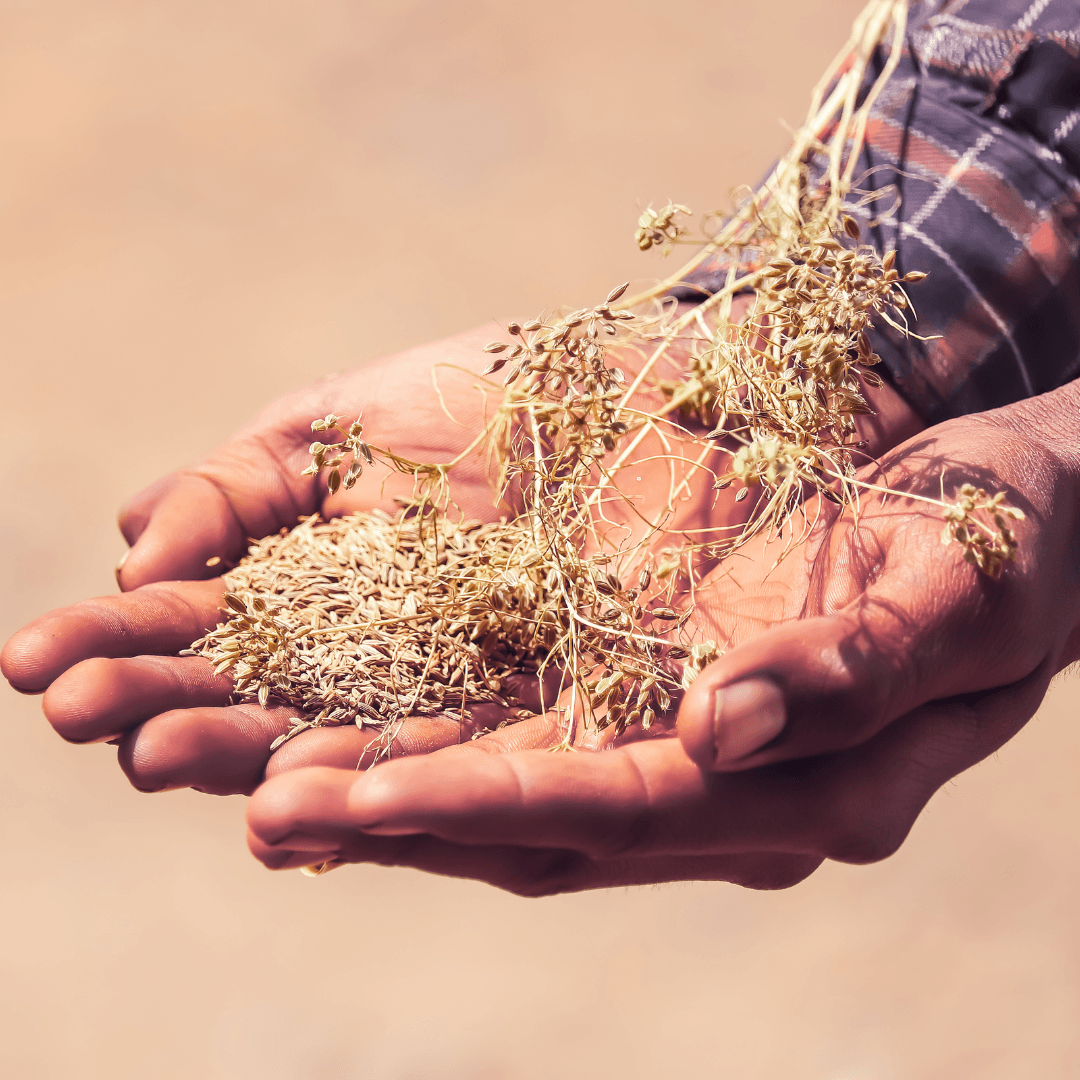
1. Timing For Planting Cumin
Timing is crucial when planting cumin seeds for successful cultivation. Wait until after the last frost date in your region before sowing the seeds, as cumin thrives in warm weather conditions.
In late spring or early summer, cumin is best planted when the soil temperature is at least 60°F (15°C).
Thanks to this timing, the seeds can germinate and establish themselves in ideal growing conditions.
Planting too early, when the soil is still cold, can delay germination or lead to poor seedling establishment.
Waiting for warmer temperatures gives the seeds the best chance of sprouting and developing into healthy cumin plants.
Additionally, planting cumin during the recommended timeframe allows for a longer growing season, maximizing the plant's growth and productivity.
All things considered, timing is essential to the success of cumin cultivation because it guarantees that the plants have the warmth and sunlight they require to flourish.
Key Points For Timing
- Post-Frost Planting: Wait until after the last frost date to plant cumin seeds for successful growth.
- Optimal Season: Late spring or early summer is the ideal timeframe for sowing cumin.
- Monitor Soil Temperature: Ensure soil temperatures reach at least 60°F (15°C) before planting.
- Avoid Early Planting: Planting in cold soil can delay germination and hinder seedlings.
- Extend Growing Season: Proper timing maximizes the growth period for cumin plants.
- Essential for Success: Timing is critical for providing warmth and sunlight for thriving cumin.

2. Soil Preparation For Planting Cumin
To plant cumin successfully, it is first important to prepare the soil carefully. This includes choosing a location that drains well and having the right soil composition to support healthy growth and ward against problems like root rot and waterlogging.
Avoid areas with poor drainage or clay soil as these might lead to fungal diseases like root rot.
Once you've chosen the site, clear the planting area of any weeds, rocks, or debris that may obstruct growth or interfere with seedling establishment.
The soil is next worked down to a depth of 6 to 8 inches using a tiller or garden fork, loosening it to a crumbly condition that makes it easier for roots to penetrate and absorb water.
Incorporate organic amendments like compost or aged manure to enhance the soil's fertility and structure. These amendments supply vital nutrients for vigorous plant development.
Through meticulous soil preparation, you establish an ideal growing environment conducive to the thriving growth of cumin plants, ensuring a fruitful yield of aromatic seeds.
Key Points For Soil Preparation
- Select a Well-Draining Location: Ensure good drainage to avoid issues like root rot.
- Avoid Heavy Clay Soil: Avoid poorly draining soils that can lead to fungal diseases.
- Clear the Planting Area: Remove any weeds, rocks, or debris obstructing growth.
- Loosen Soil: Cultivate the soil to a depth of 6 to 8 inches for effective root penetration.
- Enhance Fertility: Add organic amendments like compost or aged manure for nutrient enrichment.
- Establish Optimal Growing Conditions: Proper soil preparation supports healthy cumin growth and a fruitful yield.
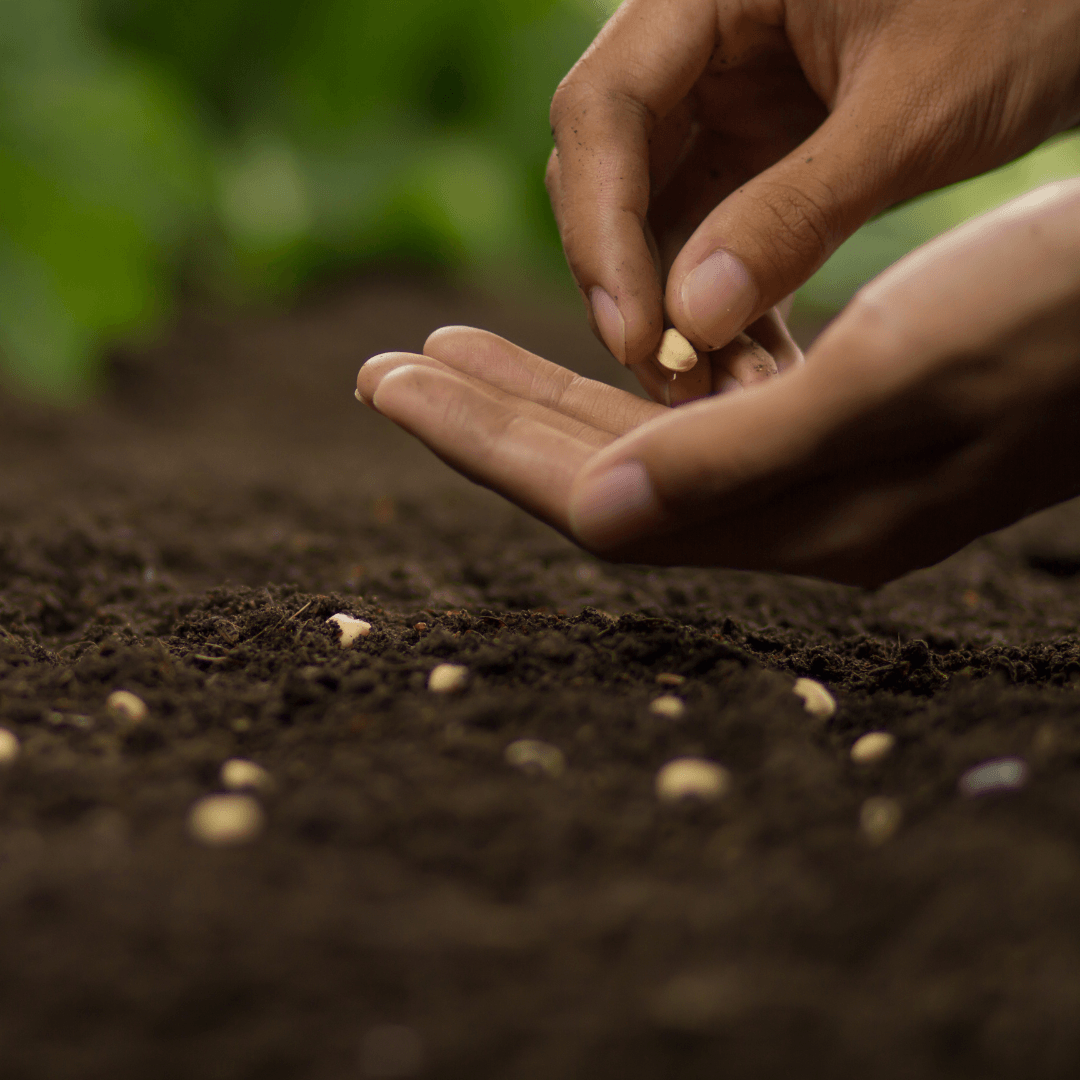
3. Sowing Cumin Seeds
Sowing cumin seeds is a straightforward process that requires attention to spacing and depth for optimal germination and growth.
Begin by scattering the cumin seeds evenly over the prepared soil surface, ensuring they are spaced about 4 to 6 inches apart within rows 12 to 18 inches apart.
This spacing allows the cumin plants ample room to develop and prevents overcrowding, which can lead to competition for nutrients and hinder growth.
After scattering the seeds, lightly press them into the soil with your fingers or a rake to ensure good seed-to-soil contact and to prevent them from being washed away during watering.
Cover the seeds with a thin layer of soil or compost to give insulation and protection, letting light through to promote germination.
Following these measures ensures a good harvest of tasty cumin seeds, creating an excellent habitat for cumin seedlings to establish themselves and grow.
Key Points For Sowing Cumin Seeds
- Follow Spacing Guidelines: Space seeds 4 to 6 inches apart in rows 12 to 18 inches apart.
- Distribute Evenly: Scatter seeds uniformly over the soil for consistent growth.
- Ensure Seed-To-Soil Contact: Lightly press seeds into the soil to prevent washout during watering.
- Cover With Soil: Use a thin layer of soil or compost to protect seeds while allowing light for germination.
- Create Optimal Conditions: Implement these practices to foster seed germination and seedling growth.
- Aim For A Good Harvest: Proper sowing techniques are key to achieving a flavorful cumin yield.
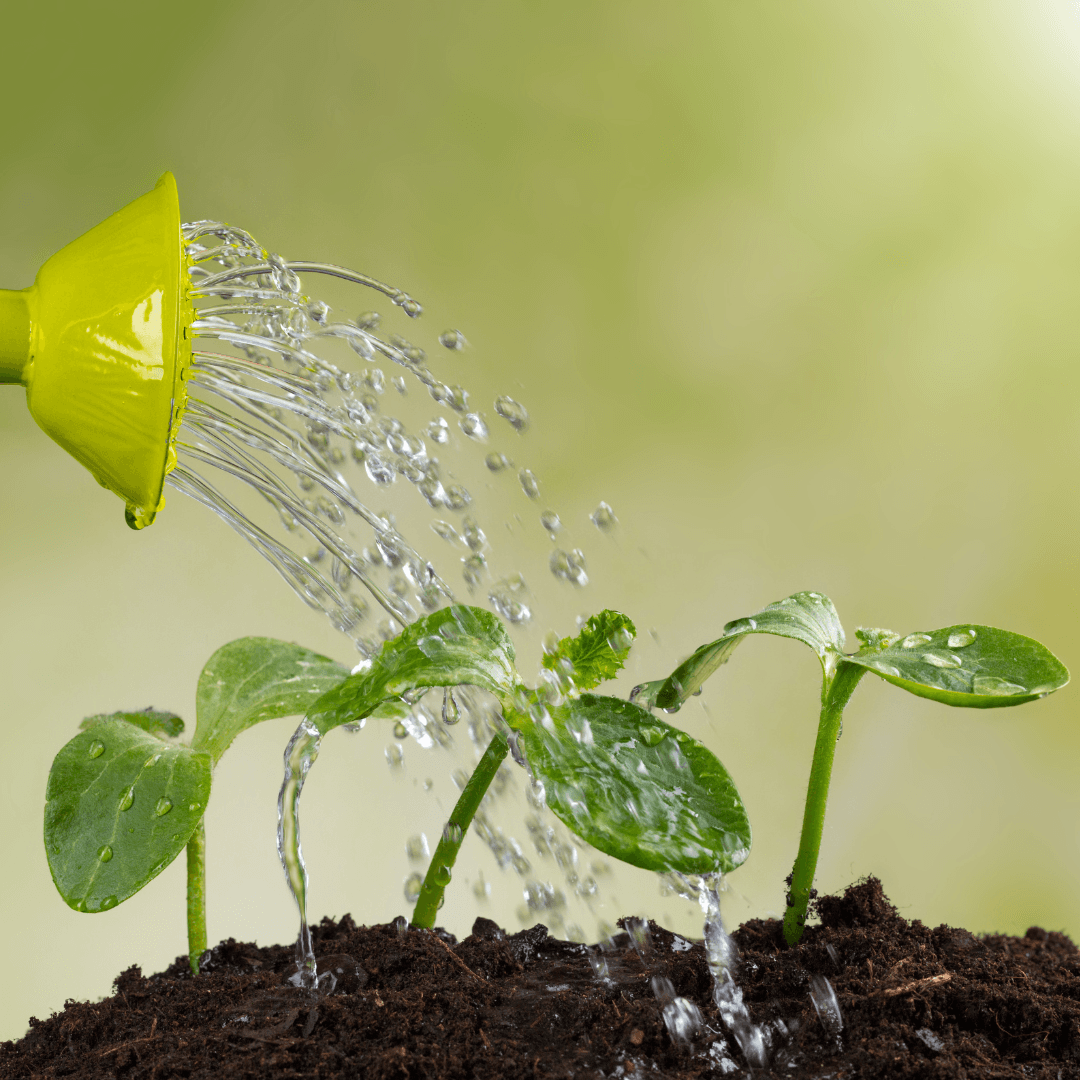
4. Watering Cumin Plants
Mastering cumin planting requires proper watering techniques to maintain optimal moisture for seed germination and seedling growth, laying the foundation for a healthy, abundant harvest.
After sowing the seeds, gently water the planting area to moisten the soil evenly, ensuring it remains moist but not soggy.
Overwatering can lead to seed rot or fungal diseases, so striking the right balance is crucial. To maintain constant moisture levels, check the soil moisture frequently, especially during dry spells—water as necessary.
Under ideal circumstances, cumin seeds normally sprout in 7 to 14 days, though this might vary based on soil moisture content and temperature. Keep a close eye on the planting area and continue to water as necessary until the seeds sprout and seedlings emerge.
Adjust your watering schedule once the seedlings are established to ensure the soil remains evenly moist throughout the growing season.
Do not let it dry out completely between waterings. Providing adequate moisture during the critical germination period sets the stage for healthy cumin plants and a successful harvest of flavorful seeds.
Key Points For Watering Cumin Plants
- Achieve Optimal Moisture: Water the soil gently after sowing to keep it moist, not soggy.
- Prevent Overwatering: Maintain a balance to avoid seed rot and fungal diseases.
- Monitor Soil Moisture: Check frequently, especially during dry spells, and water as needed.
- Germination Timeframe: Seeds typically sprout in 7 to 14 days, influenced by moisture and temperature.
- Adjust After Seedling Emergence: Change the watering schedule to ensure consistent moisture.
- Promote Healthy Growth: Adequate moisture during germination is critical to a successful cumin harvest.
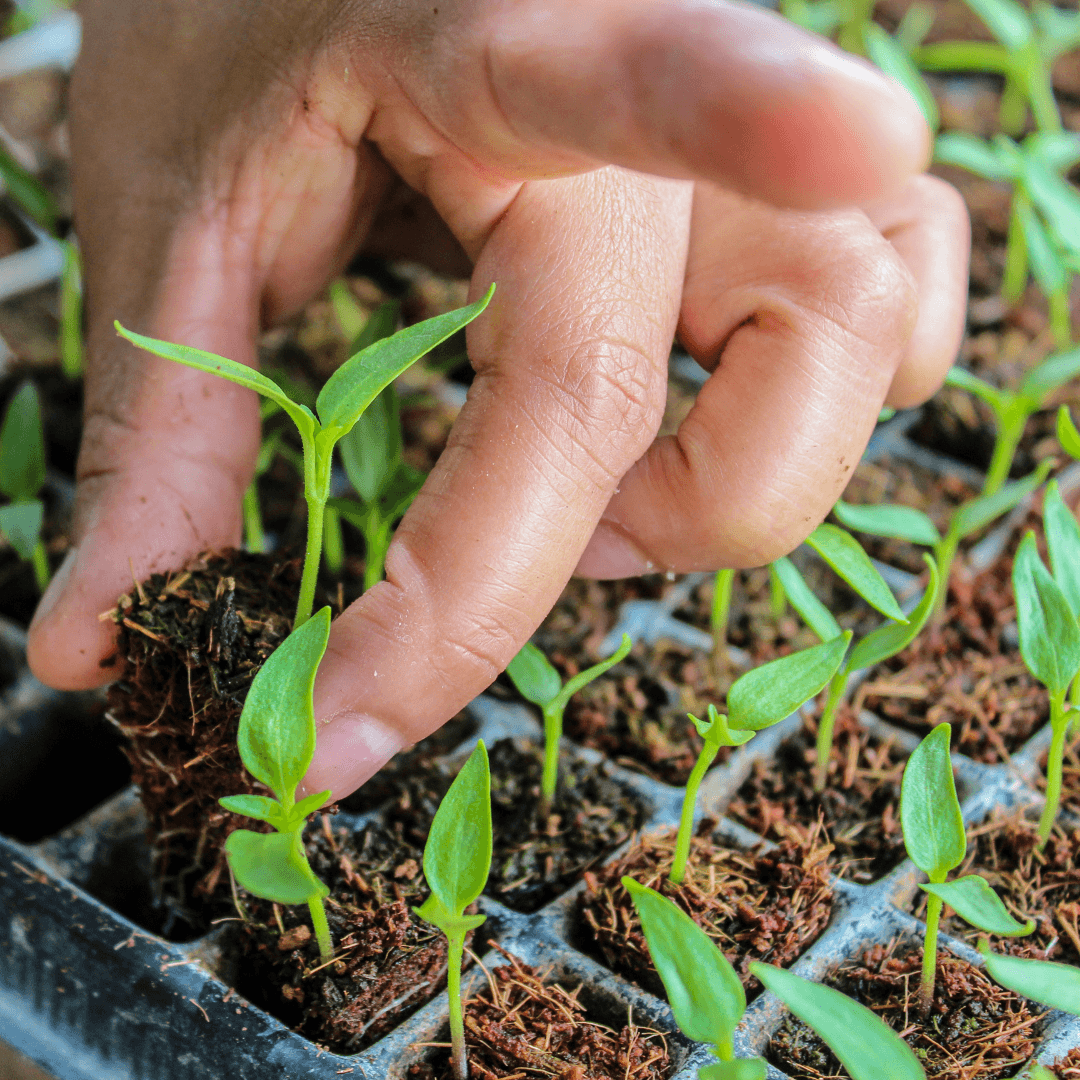
5. Thinning Cumin Seedlings
Thinning is a crucial step in the cumin cultivation process to ensure optimal growth and productivity of the plants. Once the cumin seedlings emerge from the soil, they must be thinned to about 8 to 10 inches apart.
Overcrowding can hinder plant growth and reduce total yield by creating competition for resources like sunlight, water, and nutrients.
Thinning allows the remaining seedlings ample space to spread out their roots, access nutrients more efficiently, and receive adequate sunlight for photosynthesis.
Proper spacing also lowers the risk of fungal infections and other problems linked to inadequate ventilation and encourages improved air circulation around the plants.
When thinning the seedlings, carefully remove the weakest or smallest plants, leaving behind the healthiest and most robust ones.
By thinning the cumin seedlings appropriately, you create an environment conducive to vigorous growth and development, ultimately leading to a bountiful harvest of flavourful cumin seeds.
Key Points For Thinning Cumin Seedlings
- Ensure Proper Spacing: Thin seedlings to 8 to 10 inches apart.
- Minimize Competition: Reduce overcrowding to improve resource access.
- Promote Root Growth: Allow remaining plants to develop stronger roots.
- Maximize Sunlight: Enhance photosynthesis by providing adequate light.
- Decrease Disease Risk: Improve air circulation to prevent fungal issues.
- Focus on Strength: Remove weaker seedlings, keeping the healthiest ones.
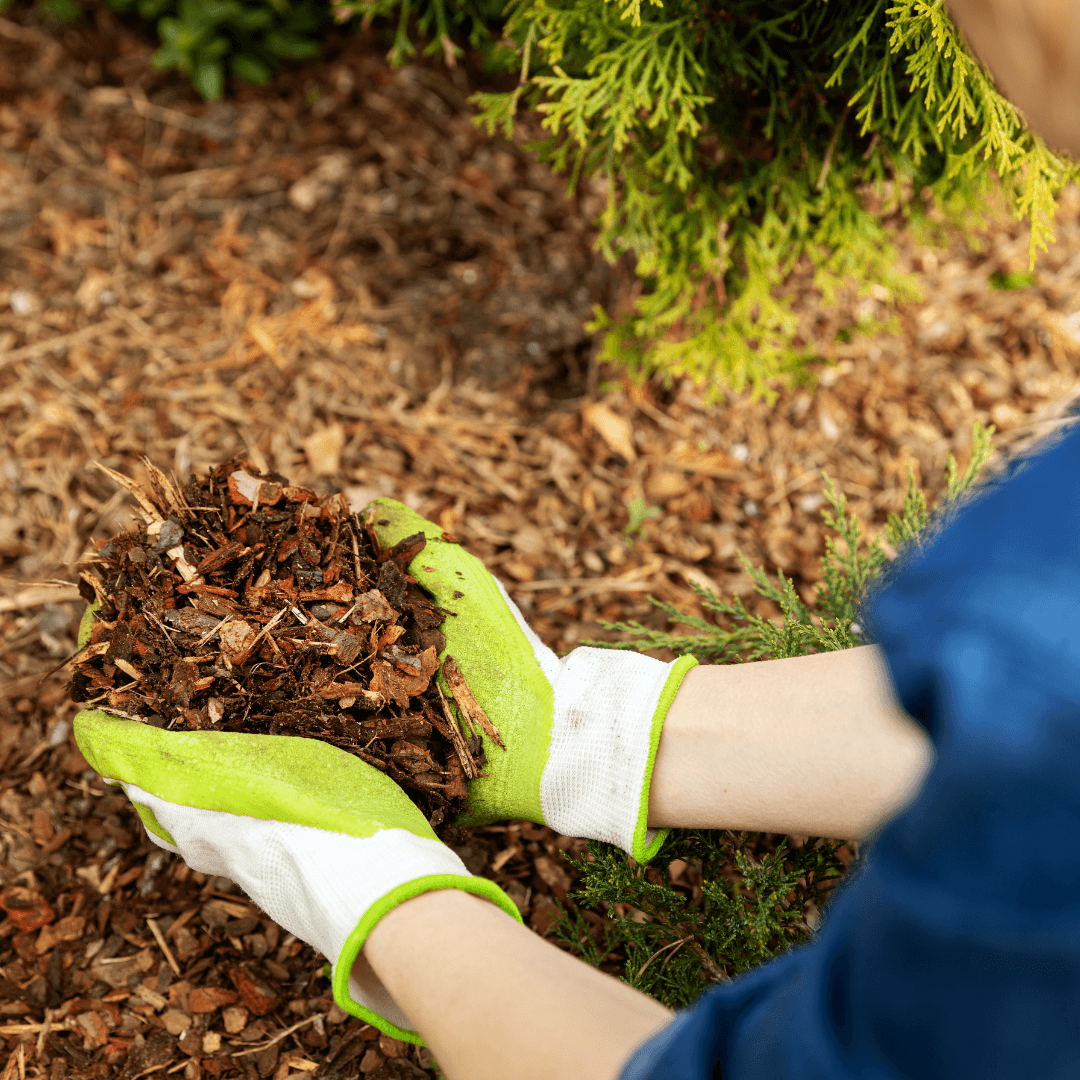
6. Mulching Cumin Plants
Implementing mulching techniques is vital to understanding how to plant cumin. Mulching creates an optimal growing environment by conserving moisture, suppressing weeds, and promoting overall plant health and productivity.
First, by lowering evaporation, mulch helps keep soil moisture levels stable, preventing the soil from getting soggy.
This is particularly beneficial during hot and dry periods when moisture retention is crucial for plant growth and development.
Mulch naturally suppresses weeds by smothering their seeds, preventing germination and competition with cumin plants for nutrients.
Mulch minimizes weed growth, reducing the need for manual weeding and conserving water by eliminating competition from unwanted plants.
Furthermore, mulch helps regulate soil temperature by insulating it, keeping it cooler in hot and warmer weather. This stable soil temperature promotes root growth and microbial activity, supporting overall plant health and vigour.
Overall, mulching is a valuable practice in cumin cultivation. It provides numerous benefits that contribute to optimal plant growth and productivity.
Key Points For Mulching Cumin Plants
- Retain Moisture: Mulch helps keep soil moist, crucial during hot periods.
- Suppress Weeds: Prevents weed germination, reducing nutrient competition.
- Less Manual Work: Reduces the need for manual weeding.
- Regulate Soil Temperature: Insulates soil, stabilizing temperature for root growth.
- Promote Soil Health: Enhances microbial activity for better plant vigour.
- Increase Productivity: Supports optimal growing conditions for cumin.

7. Companion Planting Cumin
Companion planting cumin with compatible herbs or vegetables strategically promotes a healthy and thriving garden ecosystem.
Gardeners can harness the benefits of natural pest control and enhanced plant growth by interplanting cumin with suitable companions like basil, coriander, or marigolds. These companion plants reduce the risk of infestations and minimize the need for chemical interventions.
Additionally, they attract beneficial insects such as predatory wasps, ladybugs, and hoverflies, which prey on harmful pests and help maintain ecological balance.
Furthermore, companion plants like basil and coriander offer complementary growth habits and nutrient requirements, efficiently using available garden space and resources.
Marigolds, known for their strong scent, also act as a natural repellent against nematodes and other soil-borne pests.
By implementing companion planting techniques, gardeners can cultivate cumin in a resilient and biodiverse manner that promotes the health and productivity of all participating plants.
Key Points For Companion Planting Cumin
- Choose Compatible Plants: Pair cumin with basil, coriander, or marigolds.
- Natural Pest Control: Companion plants repel pests, reducing infestations.
- Attract Beneficial Insects: Draw in ladybugs, wasps, and hoverflies for pest control.
- Optimize Garden Space: Basil and coriander complement cumin’s growth habits.
- Soil Health: Marigolds help repel nematodes and soil pests.
- Boost Garden Resilience: Companion planting supports a healthy, productive garden.
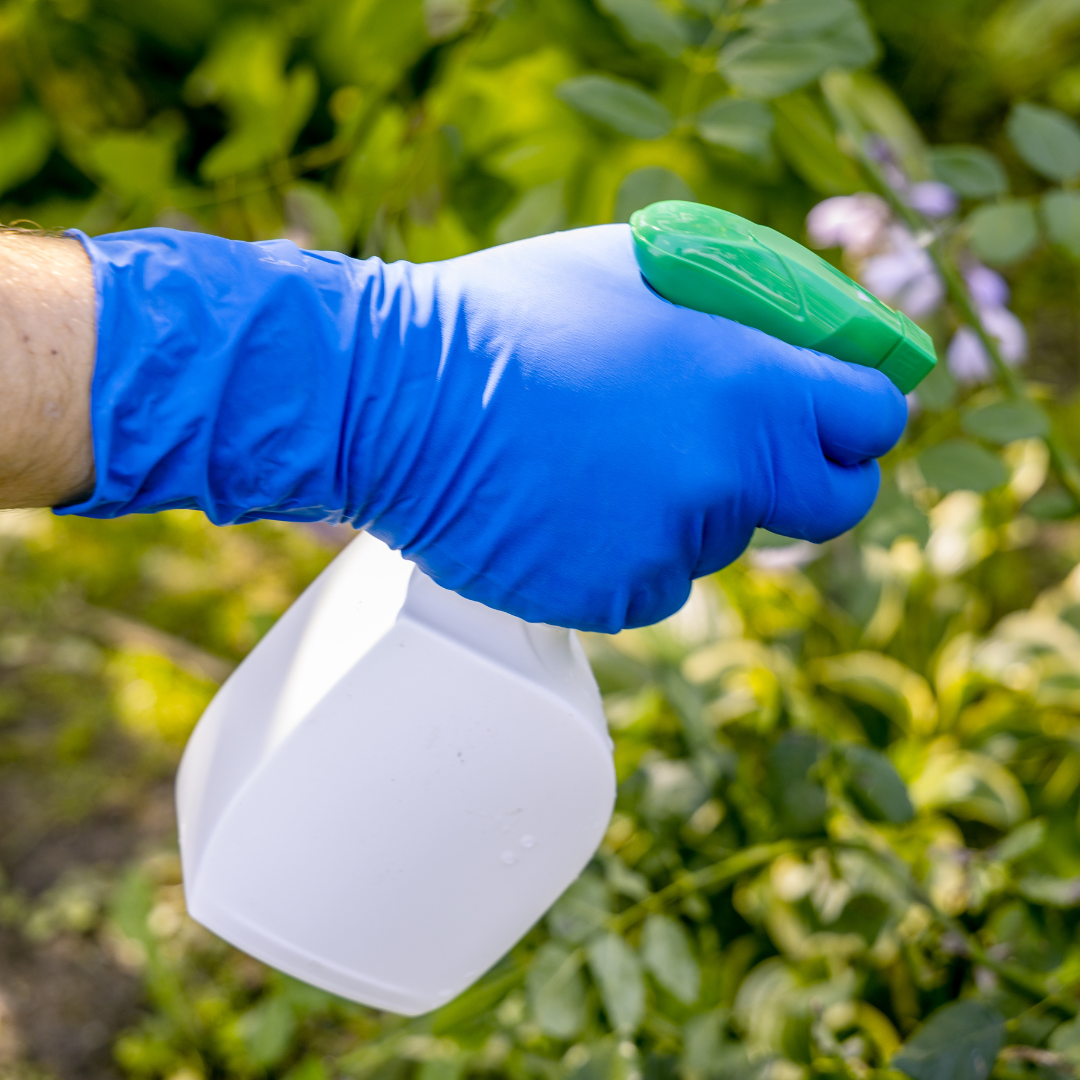
8. Pest & Disease Management Of Cumin
Knowledge of efficient pest and disease control techniques is essential to growing cumin. By doing this, you can keep your plants healthy and ensure a fruitful harvest free from common issues like spider mites, aphids, and powdery mildew.
If left unchecked, common pests like aphids, spider mites, and powdery mildew can harm cumin foliage and reduce plant vigour.
To effectively manage pest infestations, gardeners should monitor their cumin plants regularly, inspecting the foliage and stems for signs of pests or symptoms of disease.
Early detection is key to preventing pest populations from reaching damaging levels and limiting the spread of diseases.
Upon detection of pests, it is crucial to promptly address the issue using eco-friendly solutions such as insecticidal soap or neem oil.
By focusing on soft-bodied insects like spider mites and aphids, these natural therapies reduce negative impacts on beneficial insects and the garden ecology as a whole.
By proactively managing pests and diseases, gardeners can protect their cumin plants and ensure a robust and fruitful harvest of delicious seeds.
Key Points For Pest & Disease Management Of Cumin
- Identify Common Issues: Watch for aphids, spider mites, and powdery mildew.
- Regular Checks: Inspect plants frequently to catch problems early.
- Quick Action: Address pests and diseases promptly to prevent spread.
- Natural Solutions: Utilize neem oil or insecticidal soap for environmentally friendly pest control.
- Protect Ecosystem: Choose treatments that safeguard beneficial insects.
- Healthy Harvest: Consistent management supports a strong cumin yield.

9. Harvesting And Storing Cumin
Planting cumin involves cultivating the seeds, followed by careful harvesting and storage to preserve their quality and flavor for culinary and medicinal uses.
Cumin seeds should be harvested when fully mature and dry on the plant, typically around 120 to 150 days after sowing.
Using pruning shears or scissors, remove the seed heads from the plant, keeping some of the stem intact for handling.
Next, place the harvested seed heads in a well-ventilated area with low humidity to allow them to dry completely.
This drying process may take several weeks, depending on environmental conditions. Once the seed heads are thoroughly dry, gently rub them between your hands or use a threshing tool to release the seeds.
Remove any remaining trash or debris from the seeds, then transfer them to an airtight container for storage.
To keep the flavor and freshness of the dried cumin seeds for a long time, store them in a cool, dark location away from moisture and direct sunlight.
Properly stored cumin seeds can retain their potency and aroma for up to one year, making them readily available in various culinary dishes and herbal remedies.
Key Points For Harvesting And Storing Cumin
- Timing: Harvest when seeds are mature and dry (120-150 days).
- Cutting: Use shears to cut seed heads, keeping part of the stem.
- Drying: Place seed heads in a ventilated area to dry thoroughly.
- Threshing: Rub by hand or use a tool to release seeds.
- Storage: Keep it in an airtight container and store it in a cool, dark place.
- Shelf Life: Properly stored seeds stay fresh for up to one year.
FAQ
1. What Are Some Common Uses For Harvested Cumin?
Cumin seeds are widely used in cooking for their distinctive flavour and aroma. They can be used whole or ground into powder.
Cumin is a staple worldwide in many spice blends and cuisines, especially in Indian, Middle Eastern, and Mexican dishes.
2. Can I Grow Cumin In Containers?
Yes, as long as the containers are deep enough (at least 12 inches) to support the taproot of the plant, cumin can be grown in them. Place the container in an area with lots of sunlight and make sure it drains well.
Conclusion
Planting cumin at home is a simple yet rewarding endeavour that brings fresh, aromatic seeds to your kitchen. With suitable soil, plenty of sunlight, and patience, you can enjoy a thriving cumin crop each season.
By following these expert tips on How to Plant Cumin, you'll be well on your way to a successful harvest. Happy gardening!
I trust you enjoyed this article on the Expert Tips On How To Plant Cumin Successfully. Please stay tuned for more blog posts soon. Take care!
JeannetteZ
>>>Please click here to read my all-inclusive article about Container Gardening<<<
>>>Are you interested in homegrown herbs and medicine? Please click here to find out more about it!<<<
Your Opinion Is Important To Me
Do you have thoughts, ideas, or questions? I would love to hear from you. Please leave me your questions, experiences, and remarks about this Expert Tips On How To Plant Cumin Successfully article in the comments section below. You can also reach me by email at Jeannette@Close-To-Nature.org.
Disclosure
This post may contain affiliate links. As an Amazon Associate and other affiliate programs, I earn from qualifying purchases at no extra cost to you. Please read my full affiliate disclosure.
You might also enjoy these blog posts:
Best Tips To Grow Skullcap In Containers
Best Tips To Grow Tulips In Containers
Best Tips To Grow Snowdrops In Containers
Best Tips To Grow Slippery Elm In Containers



